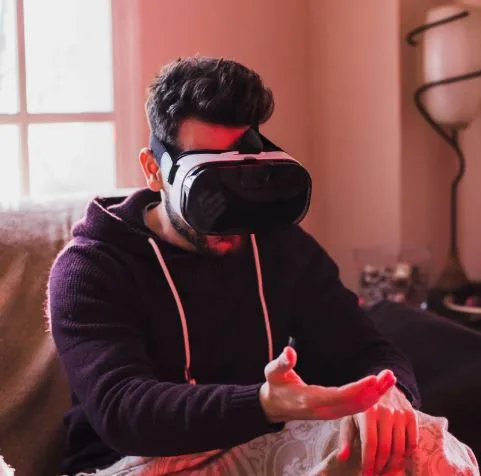The Future of Online Gaming: VR and Melbet Slot Experiments
The advancement of internet gaming inevitably continues to blend the lines between actual and simulated occurrences, and what were once images upon a plane surface with static two dimensional responses of effect, the realm of the virtual casino is now in the realm of the experience as a result of the modern rage in virtual reality (VR) technology. In this additional dimension, there is a real revolution in the conception of space, time, and fortune as held in the vision of the players, giving in turn a new conception of the nature of the game being played, which is the game environment. This is no violent or swift revolution, but a successive evolution as the logic of experience has led to this conclusion after years of experiment upon different media and different audiences to the more or less mediæval commonplace.
The Integration of VR into Game Environments
Moving from 2D play into 3D space involves not only better graphics but a total renewal of perception. The very way in which the players must perceive feedback, risk, and reward must be completely revolutionised. The framework MelBet slot attempts to get to grips with this initially difficult area is an interesting early-stage experiment, showing how more immersive mechanics can be incorporated with traditional betting logic.
Thus, in these continually experimental surroundings, VR as an idea does not act as a form of spectacle, but at a higher level of infrastructural reality. Hence, the players move throughout the over-speculative trade of rendered casinos, working physically at machines, perceiving results not as numbers but as discrete events of the physical world, in space and time. Not fulfillment of a realism or realism is the search for results, but sensory veracity; the aspiration is that every spin, pull, and click directs the attention of the player into a coherent digital environment.
The architecture that serves to underpin these integrations is based on motion mapping, head tracking, and multilayered probability presentation. The visualisation of reality in these projections takes on the aspects of the tangible, the abstracted mathematics resulting in physical objects, currency visualisation, spinning reels, dynamic payout, and so forth, creating a new environment where mathematics itself is rendered visible.
Technical and Design Innovations Behind VR Slots
Understanding the underlying mechanics of VR-driven slot systems clarifies why this transition marks such a pivotal point in online gaming. The following table illustrates the structural difference between standard and immersive slots.
| Feature | Traditional Slots | VR-Enhanced Slots |
| User Interface | 2D reels, flat HUD | Spatially interactive environment |
| Feedback | Audio + visual | Multi-sensory (motion, spatial sound, light) |
| Player Input | Click or tap | Gesture, gaze, or controller movement |
| Data Representation | Numeric display | Visualized probability models |
| Immersion Level | Moderate | Fully embodied experience |
These contrasts reveal the leap from symbolic engagement to experiential realism. Instead of watching reels spin, players stand before them — the distinction subtle yet psychologically significant.
Before outlining specific technological features, it’s worth noting that immersion is not purely aesthetic. It serves as a behavioral anchor, sustaining attention longer and creating emotional continuity between play sessions.
Core Technological Elements in VR Slot Development:
- Motion-responsive environments adjusting to player perspective
- Real-time probability visualization embedded in design
- 3D soundscapes replicating casino acoustics
- Haptic controller feedback synchronized with outcomes
Each feature works toward one goal: to make chance feel tactile without compromising fairness. The human brain processes physical response differently from abstract calculation; VR bridges that cognitive gap.
Experimental Features and User-Centered Design
The move toward immersive gaming also redefines how developers think about accessibility and design ethics. Before listing practical implementations, it’s important to highlight that modern experiments aim to make the experience richer, not merely more intense. Balance remains crucial — overstimulation risks alienating users instead of attracting them.
Design Directions Emerging from Current Experiments:
- Adjustable immersion levels for comfort and device compatibility
- Optional “classic mode” interfaces within VR environments
- Cross-platform access between desktop, headset, and mobile
- Transparent odds visualization for ethical compliance
These functions represent a philosophy of inclusion: advanced technology without alienation. The player decides how deep to enter the virtual space, preserving autonomy while still embracing innovation.
Simultaneously, developers integrate behavioral analytics to refine design responsiveness. Subtle cues — eye-tracking patterns, spin frequency, and engagement duration — inform adaptive features that respond in real time, optimizing both performance and comfort.
User Interaction Enhancements Through Data Feedback:
- AI-driven customization of slot difficulty curves
- Ambient lighting shifts reflecting user rhythm
- Predictive load optimization reducing motion latency
- Session timers promoting healthy gaming intervals
Together, these refinements define a responsible model for immersive gambling — one that values clarity and well-being alongside entertainment.
The Broader Horizon of Immersive Gaming
The rise of VR in gaming represents a cultural pivot rather than a mere technical upgrade. It reimagines agency — transforming players from spectators into participants. Melbet’s slot experiments illustrate how this future may unfold: through convergence, not replacement. Classic mechanics persist, but their presentation evolves into a three-dimensional narrative space.
Looking forward, the likely trajectory combines VR with augmented and mixed reality interfaces, integrating gesture, sound, and environmental context into gameplay. In that synthesis, chance becomes theater, data becomes art, and gaming transcends its medium. The line between play and presence will blur — not as a warning, but as an invitation to experience possibility in its most literal form.





